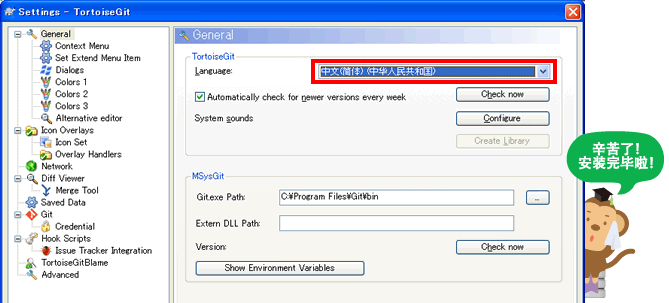SourceTree and out-of-the-box git-flow branching allows you to keep the repositories clutter-free, which facilitates high-capacity development. You will like the interactive rebase tool the SourceTree offers. Use it to make commits cleaner and clearer. Manage your projects smarter with Submodules. Group them, set dependencies, and do other. I just tried to install the sourcetree cask, but it failed like so:% brew cask install sourcetree Caveats Cask sourcetree installs files under '/usr/local'. The presence of such files can cause warnings when running 'brew doctor', w. Sourcetree, a free visual Git client for Mac, comes with its own bundled version of Git. You can download Sourcetree here. To learn how to use Git with Sourcetree (and how to host your Git repositories on Bitbucket) you can follow our comprehensive Git tutorial with Bitbucket and Sourcetree. Build Git from source on OS X. App name: SourceTree; App description: sourcetree (App: SourceTree.app); App website: Install the App. Dec 15, 2020 You can use rosseta to use latest sourcetree. Check the security options to unlock the App after the first use. I'd recommend to use homebrew to install Sourcetree, git and Hg. Brew install git git-lfs git-flow hg sourcetree.
I am a Software Engineer and I like when the tools I use help me through my day of work, not when they make it complicated. This goes through the choice of tools that I use, and how I configure them. In this post, I thought I would share what are “my essentials” when I use my Mac…
I was a great fan of Sublime Text… until Visual Studio Code came out. VS Code is great text editor, and it does much more (markdown preview, including images; Javascript debugger, etc.). Lots of plugins are available, updates are frequent (unlike Sublime…), and it is fast (unlike Atom). And no, it has nothing to do with the Visual Studio IDE.
I am a Kotlin/Scala/Java developer, and IntelliJ IDEA is just the best IDE on the market for these languages. Many people use the Ultimate Edition (paid version) but I use the Community Edition. All I need is in there: support for the programming languages I use (Kotlin/Scala/Java), support for the build tools I use (Gradle/Maven/SBT).
SourceTree is a GUI for Git. What I absolutely love with SourceTree is the ability to stage hunks of code (this can even be a single line). This allows you to precisely select what you are committing, and what you are leaving behind. With SourceTree, you will never commit something unwanted.
iTerm2 is a great replacement for Terminal. It allows you to split your windows, it has better text editing features, and lots of options.
Oh My Zsh is a tool to manage your Zsh configuration. It has plugins, such as a Git plugin to display information about the current Git repository in your prompt.
My prompt is largely customized to display the following information:
- the time, so that I can go back and see when I typed a command, and also to have an estimate of how long a command took to execute
- the user and hostname, so that I know where this console is running, which is useful when I log in on EC2 instances
- the full path to the current directory, so that I know where commands are executed, and so that I can easily copy/paste the path
- Git information, to know what branch I am in, and to know if there are non-committed changes (displays a red ‘*’).
The colors allow me to easily spot the information of the prompt, and also to see where commands where typed (it is hard to distinguish commands from results if your terminal displays all the text in one color).
Homebrew is a package installer. Almost everything I install on my Mac comes through Homebrew. It just works.
Want to install Maven? Just run brew install maven!
I also recommend using Homebrew Cask to be able to install applications that have installers.
f.lux is a small utility that changes the color scheme of your screen throughout the day so that it never looks too bright (and especially too blue at night).
Homebrew Sourcetree Game
Yes, my screen turns yellow-ish at night and I love it!
Homebrew Sourcetree Guide
I used Microsoft Windows for a very long time, and Alt+Tab allows you to cycle between your windows. All your windows. On a Mac, on the contrary, you switch between applications with Command+Tab, and another shortcut to switch between windows of the same application. Too complicated for me!

HyperSwitch allows you to remap Alt+Tab (or another shortcut) to cycle between your windows. It does other things but this is all I am using it for.
ShiftIt is a tool that allows you to manage the size and position of your windows through keyboard shortcuts. It is simple and works perfectly. I use it to put 2 windows side-by-side, or to maximize a window.
This page contains information that may be useful to people developing on macOS.
Note that the applications, tools, and libraries listed below are simply those that some have found useful. They shouldnotbe interpreted as mandatory.
Sourcetree Homebrew
gitk
The version of Git that comes with Xcode may not include gitk, a GUI-based Git repository browser. A workaround is to get a newer version using Homebrew:
If gitk does not start with an unknown color name 'lime' error, upgrade your version of Tcl/Tk:
References:
Homebrew Sourcetree App
SourceTree
SourceTree is a free Git and Mercurial client for Windows and macOS made by Atlassian.
(Notes coming soon)
A few of us have used the Xcode tool “Instruments” (which should already be installed on your system) with considerable success, but we do not have much experience with it yet.
